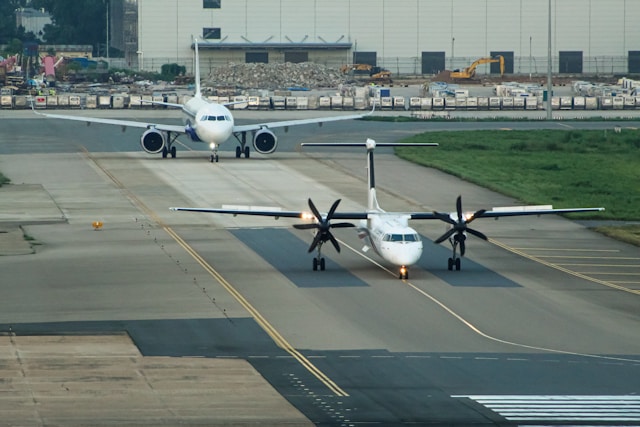Ensuring an aircraft is ready for takeoff calls for exacting attention to detail to ensure safe and comfortable travel. As a pilot, your responsibilities comprise following safety regulations, doing thorough pre-flight inspections, and tracking weather forecasts. Every action you take, from designing a well-coordinated flight schedule to alerting passengers of flight information, contributes to lowering risks and increasing operational performance. This article presents five fundamental principles for properly equipping your aircraft for takeoff, with an emphasis on safety and passenger comfort throughout the operation.
1. Conduct a Thorough Pre-Flight Inspection
Before you fly, you must conduct a detailed pre-flight inspection. This ensures the aircraft’s safety. First, verify that all maintenance adheres to the service schedule. Next, examine both the avionics and electronics. Communication and navigation systems must work perfectly. Check the fuel; remember to account for unexpected detours. Inspect the aircraft visually, too. Look at control surfaces, landing gear, and structure for any signs of damage or wear. Also, make sure you can quickly get fire extinguishers and life vests, among other emergency gear. Keeping up a current checklist is quite vital. It helps avoid missing any crucial steps. Following these recommendations increases safety and efficiency dramatically, minimizing the chances of technical difficulties during your flight.
2. Review Weather Conditions
Verify the weather conditions prior to your flight. It is indispensable for safety. Examine the weather conditions at your starting point, along your route, and at your destination, both current and forthcoming. This will assist you in identifying potential hazards, such as cyclones, high winds, or other frigid conditions. Be prepared for abrupt fluctuations in the weather. This is particularly true during summer or winter when cyclones are frequent. If the weather seems bad, think about changing your flight route or postponing it. The safety of every passenger and seamless travel depends on a careful assessment of the environmental circumstances.
3. Prepare Your Flight Plan
A well-organized flight plan is the foundation of a smooth and efficient flight. Beginning with the most efficient course, consider factors like potential obstacles, weather, and airspace limits. Once you’ve settled on your course, notify Air Traffic Control (ATC) of your plans, including your flying height, speed, and any special equipment on board. This ensures that ATC understands your flight and can assist if necessary. In the event of unforeseen situations, a good flight plan includes backup courses or landing places. Having a detailed flight plan not only keeps your journey on track but also provides a critical safety net if difficulties arise during flight.
4. Ensure All Safety Protocols Are Followed
When preparing for a flight, safety should always come first. Use a comprehensive pre-flight checklist to carefully examine each safety measure. This includes reviewing essential equipment like life vests, fire extinguishers, and oxygen masks to ensure they are functioning correctly. Another critical factor is using the right materials for the aircraft systems. For example, MIL-PRF-87257 specifies fire-resistant hydraulic fluid requirements for aircraft, ensuring that the fluids used can withstand extreme conditions. Being vigilant about such specifications and other potential hazards, such as minor mechanical issues or weather concerns, greatly enhances flight safety. Following safety rules closely ensures preparedness for any unexpected occurrences during your journey and significantly reduces the likelihood of catastrophes.
5. Confirm Passenger Readiness
A pleasant and safe flight is dependent on passenger readiness. Before traveling, provide detailed safety training on emergency measures such as seatbelts, oxygen masks, and emergency exit use. Check that passengers follow other in-flight restrictions and understand when they should stow electronics. Check that travelers have the necessary comfort items—such as water and snacks—for longer travels. Good communication ensures that everyone on board understands what to do in an emergency, hence reducing passenger anxiety. Comfortable and well-educated passengers contribute to a safer and more efficient flying experience.
Conclusion
Nice preparation leads to a nice flight. Following these five fundamental guidelines – thorough inspections, weather predictions, a sound flight plan, strict adherence to safety protocols, and passenger readiness – significantly reduces the likelihood of in-flight issues. Every move contributes to a better, safer flight. Making appropriate pre-flight preparations can let you, whether your experience level is first-time or experienced, have a great flight.



